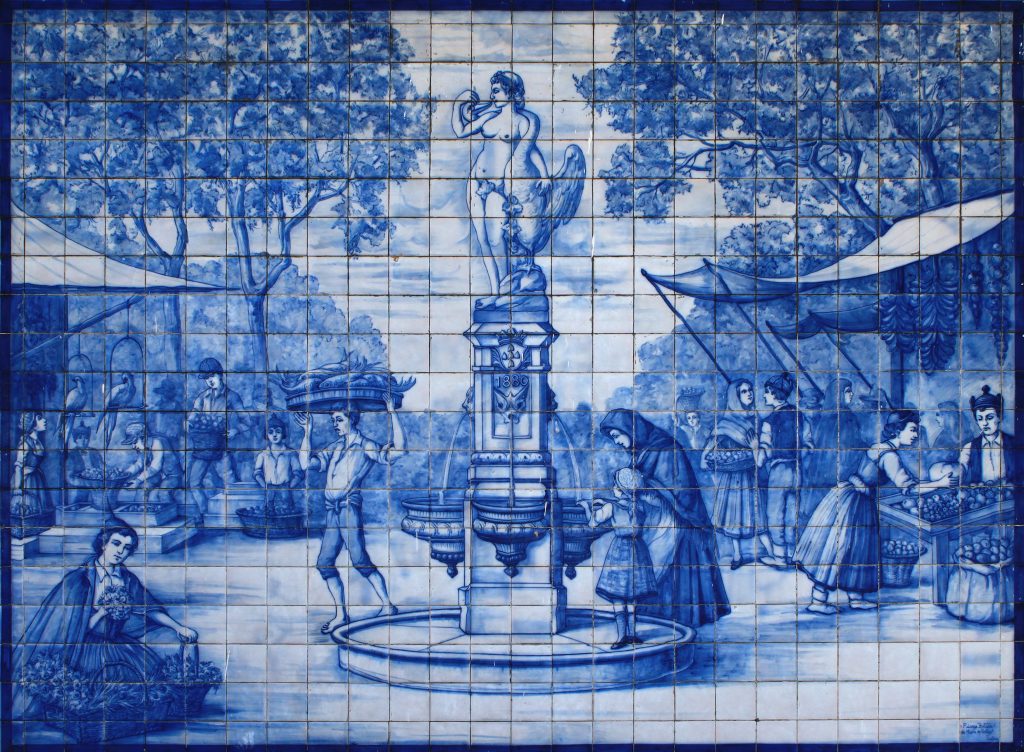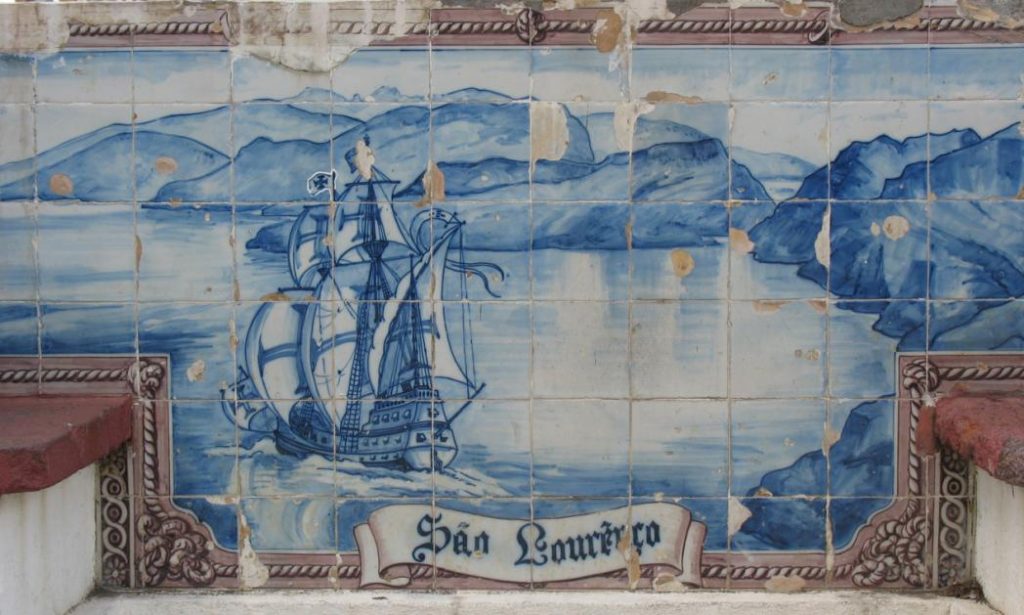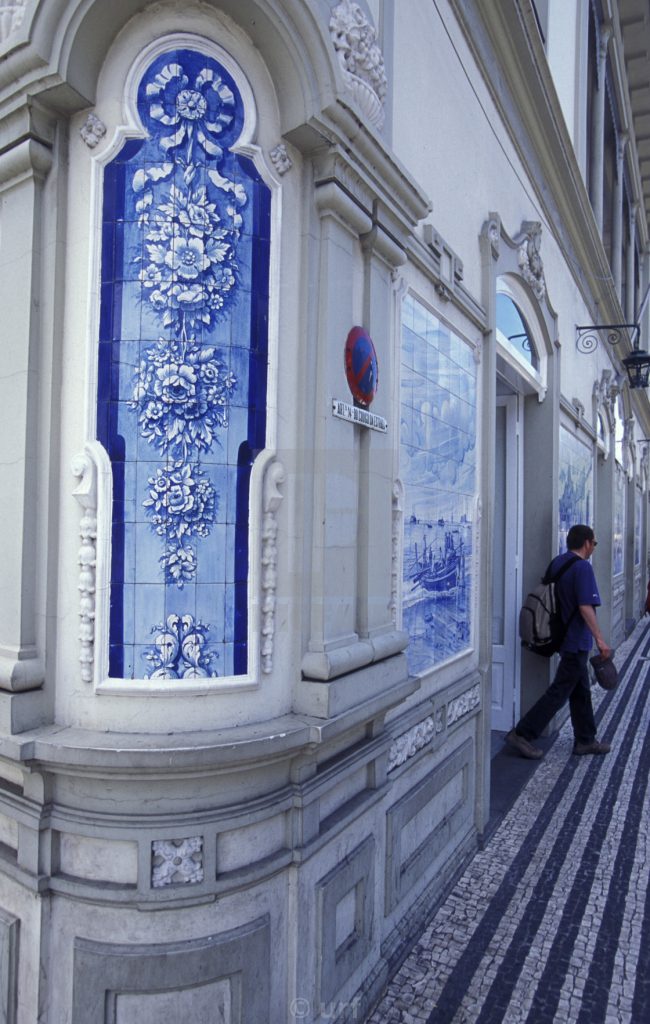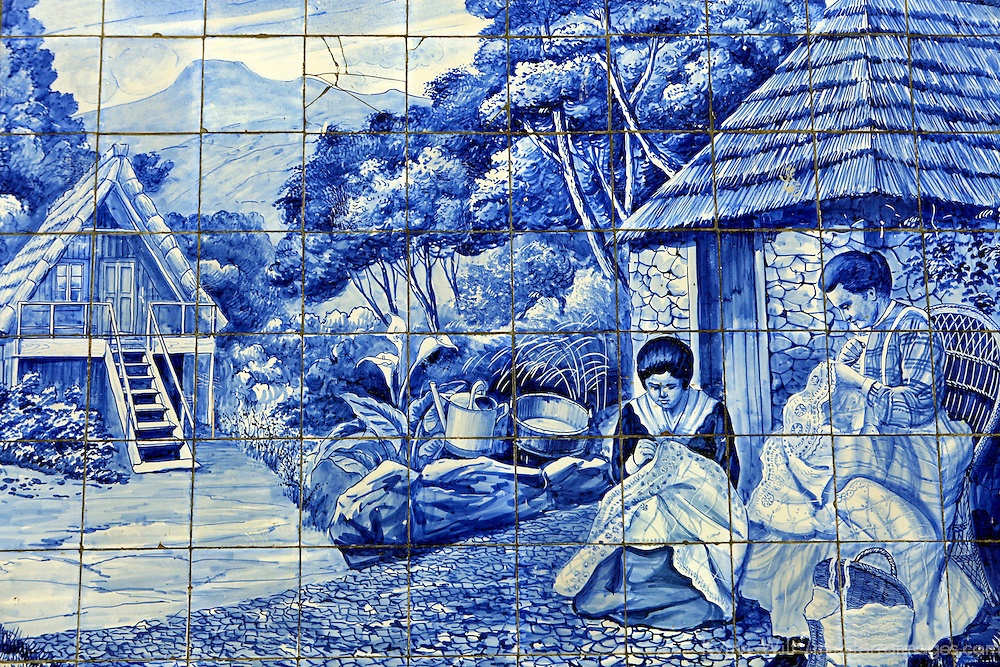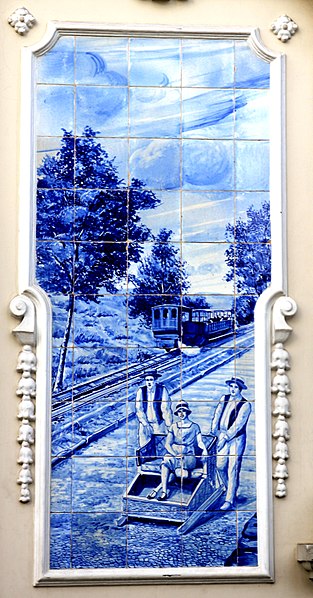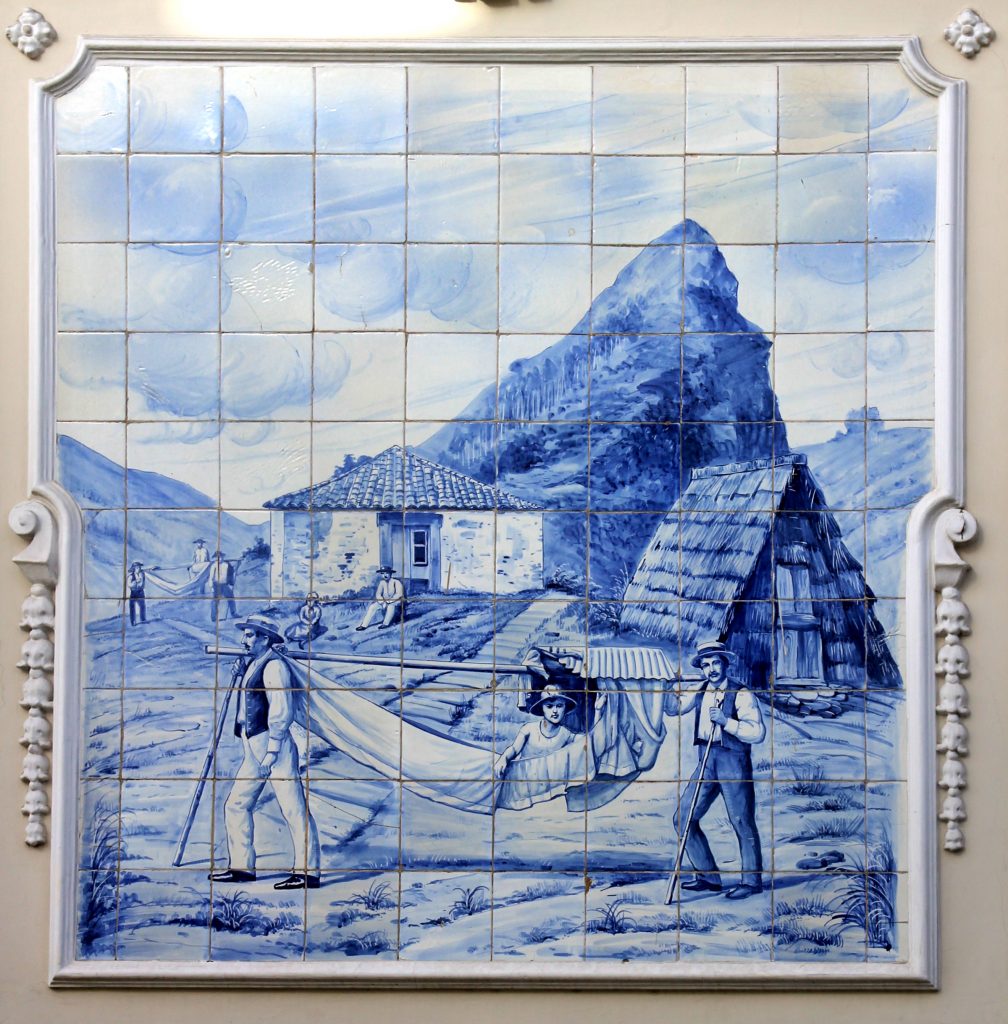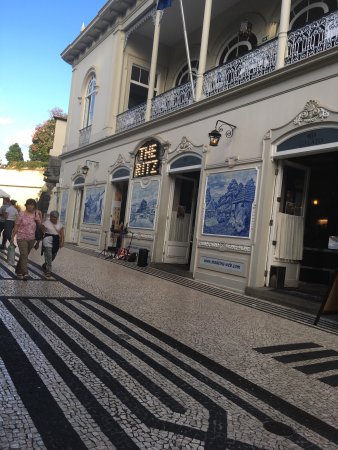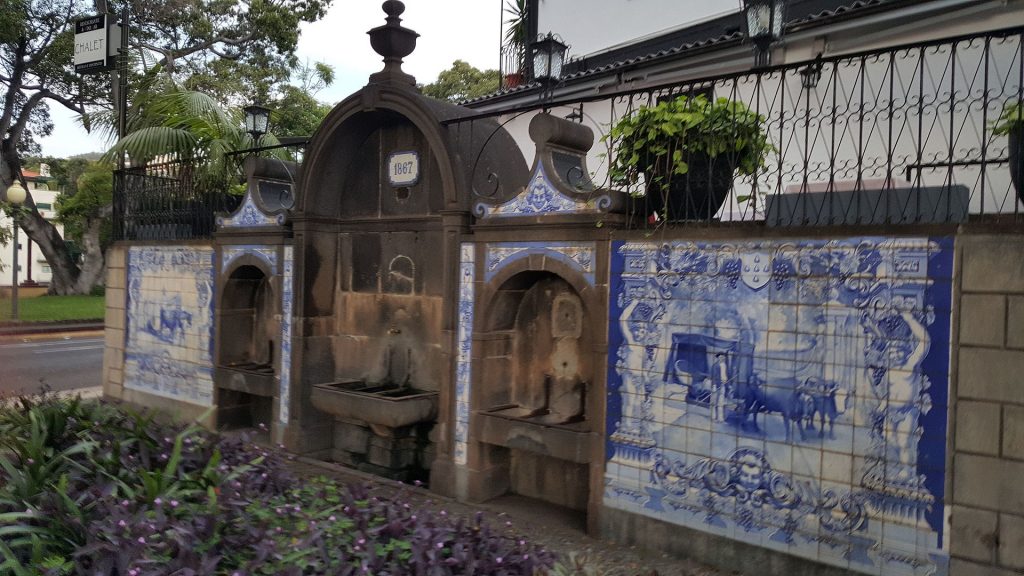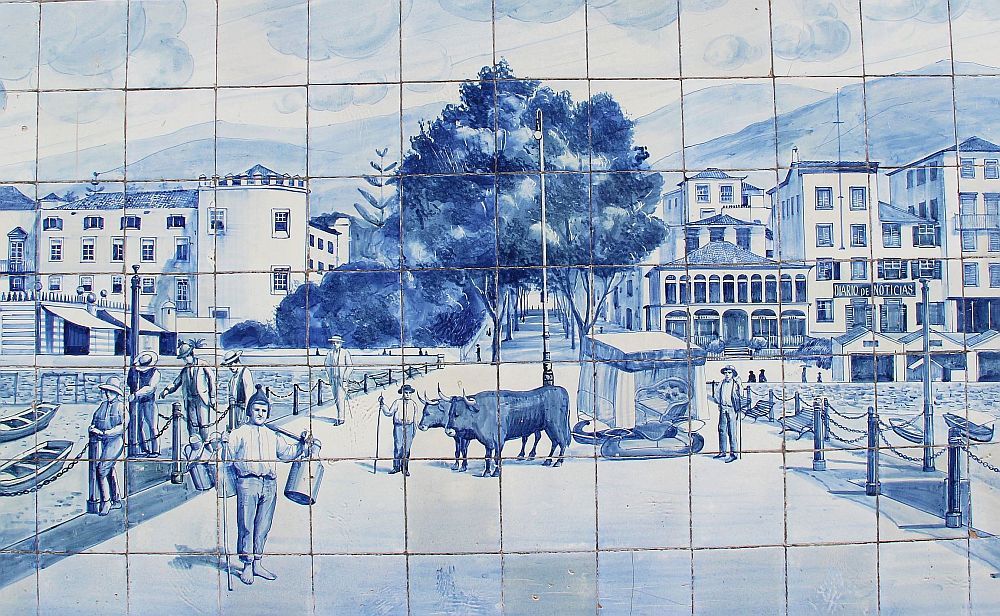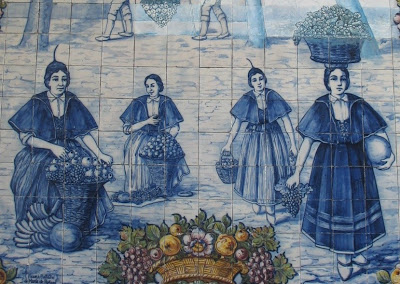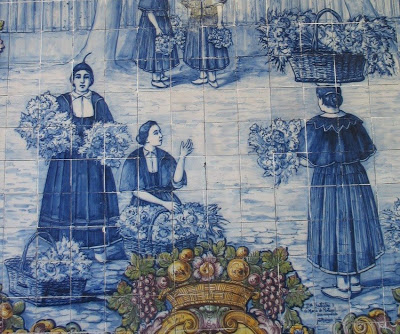Let’s Discover Azulejos on Madeira
Portugal has a long history of using tiles. Azulejos or tiles are part of Portugal culture. Azulejos on Madeira: These blue tiles adorn buildings and walls across Portugal and Madeira.
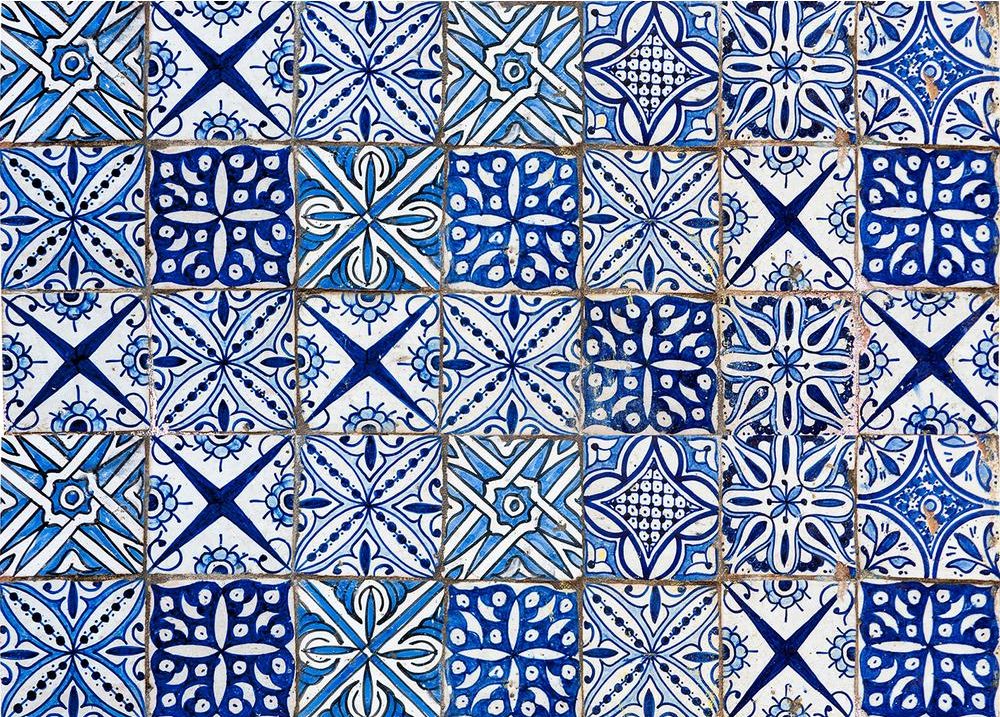
Moorish – Spanish Influence
The use of tile in Portugal is an inheritance of Islamic culture borrowed from Spain after the Moors left back home to North Africa. In other words, these tiles are known in Portugal as “Azulejos”. That is to say, azulejos comes from the Arabic. Two versions exist. Firstly, “az-zulayi” which means polished stone. Secondly, “al zulecha” which means burnt clay. In addition, King Manuel I is responsible for importing these hand painted tiles from Spain after admiring them in Granada.
Azulejos – Hand Painted Tiles

Furthermore, due to its low cost and its capacity for architectural enhancement, tiles or azulejos quickly became an essential element of decoration. Consequently, tiles or azulejos have several added advantages. Firstly, it served a hygienic purpose in crowded places. Second, azulejos express an idea and convey a story or simply to embellish a wall for example. Thirdly, azulejos protect walls from wind and rain.
Decorative Azulejos
Thus, azulejos can vary from simple geometric design to intricate and ornate patterns which actually tell a story. This is often seen in churches where azulejos protect walls and at the same time tell biblical stories or allegories. Here below, you can find an example of azulejos protecting the walls and telling a story at the same time.
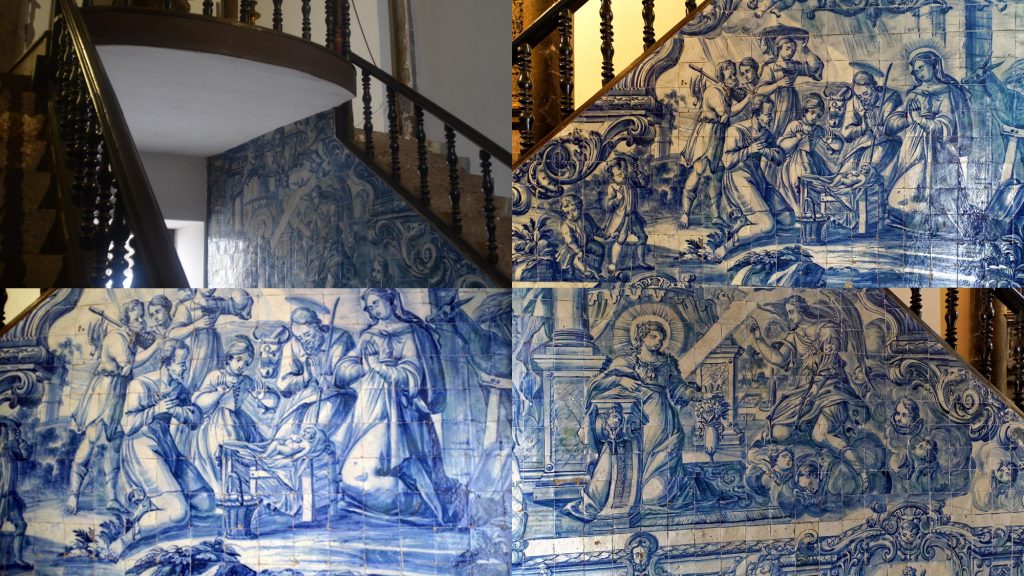
Azulejos thus possess utilitarian functions: easy to wash, ambient light reflection, creating depth or relief amongst others. However, as previously mentioned azulejos became a support of Portuguese aesthetic imagery.
